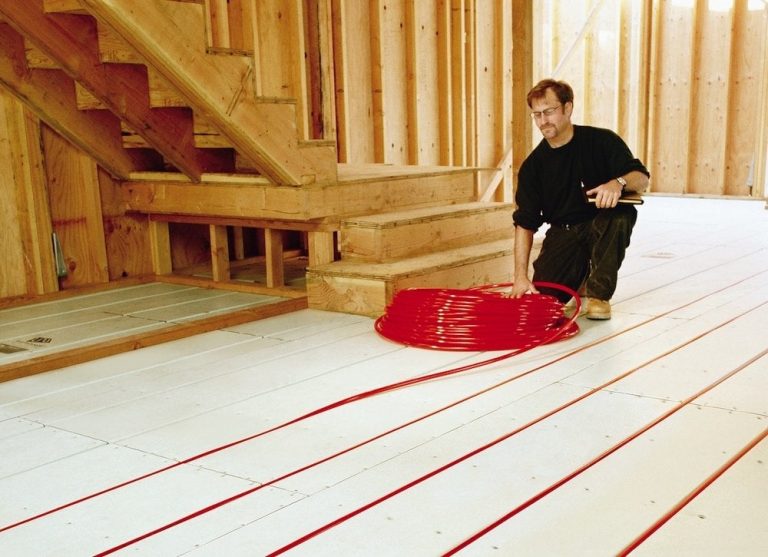While radiant floor heating is becoming more popular in new construction all the time, there are still some homeowners who are hesitant to install this type of heating system. Usually, they cite something they’ve heard about radiant heat floors that turns out to not be true. It’s time to bust some of these common myths about radiant floor heating! Here’s the truth from the experts at Heavenly Heat Inc.
Radiant Floors are Difficult to Install
A myth we hear quite often about radiant floors is that they are difficult to install, especially in structures that are already built. This couldn’t be further from the truth! While you probably want to install radiant floor heating at the same time that you replace your floors for cost-effectiveness reasons, radiant floor tubes or cables are not hard to install under just about any type of floor.
It should be installed by a professional, but your home won’t be a construction zone for months if you’re just installing radiant heated floors.
Radiant Floors are Expensive
Having heated floors sounds like a luxury, and it feels like one too, but on average, a radiant floor system is not that much more expensive than a typical furnace. And, if your home doesn’t already have ductwork for a forced air heating system, radiant flooring could actually cost less than a traditional furnace because radiant heated floors don’t need ductwork. Plus, you will save money on heating costs over time with a heated floor system, so after a while, it pays for itself.
Another point to make about the expense of heated floors is that you don’t have to install them all over your house. You can pick and choose where you want your heated floors installed. Maybe you only want them in the bathroom and bedrooms, or perhaps you often cook in bare feet so you want your kitchen floors heated too. Obviously, the more rooms in which you install heated floors, the higher your expense will be. But you can control costs by limiting where you install your headed floor system.
Radiant Floors Can Only Be Installed Under Concrete or Tile Floors
At one time, the recommendation was that radiant heat floors should only be installed under concrete or tile floors, but times have changed! Heated floors can now be installed under just about any flooring material you can imagine, including vinyl, carpet, laminate, and hardwood. The nice thing about this compatibility is that you don’t have to choose a floor material you don’t like just to get the luxuriousness of heated floors.
Radiant Floors Can’t Heat an Entire House
Again, you have complete control over how much or little of your house you heat with radiant floors. Not only can you choose not to install them in certain rooms, but you can also have them installed in multiple rooms and control them separately.
Each room or zone of a heated floor system has its own thermostat, so if you’re not using a particular room, simply turn that floor off. Have overnight guests? Turn their floors on so they can experience the comfort and warmth of your heated floor system.
Conclusion
Heated flooring sometimes has a bad reputation because it hasn’t always been as easy to install or as reasonably priced as it is today. But that was then and this is now. If it’s been a while since you checked out radiant heated floors, it’s time to look again.

